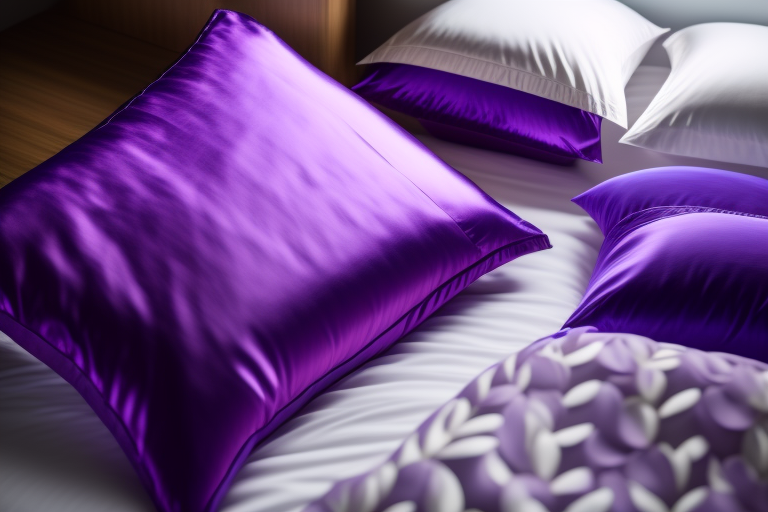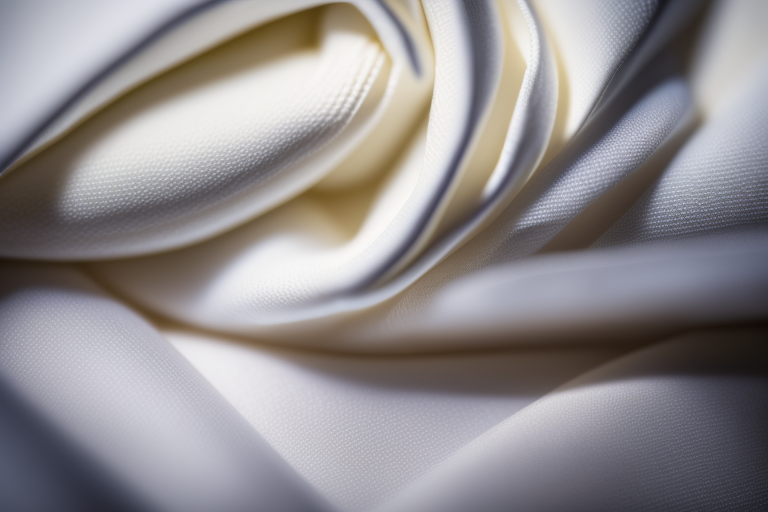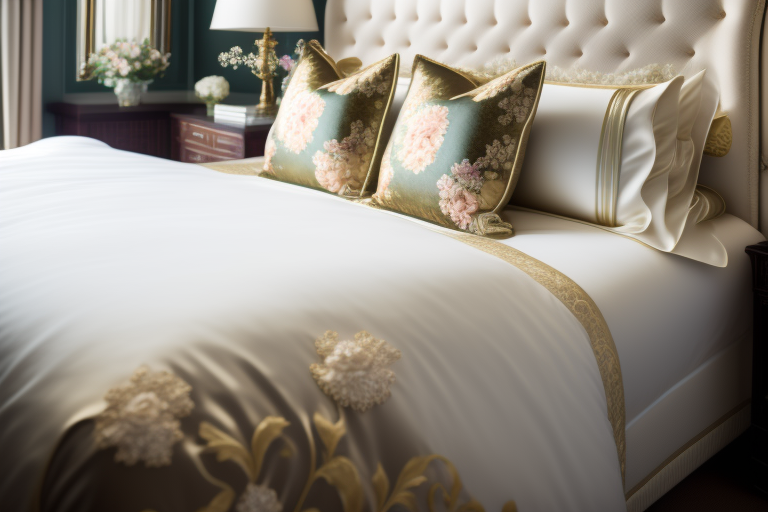Luxury sheets often come with eye-watering price tags, sometimes costing over $1,000 for a queen sheet set. But what exactly makes luxury bed sheets so expensive compared to regular sheets? Read on to learn what goes into pricing top-quality bedding.
Introduction to Luxury Bed Sheets
Luxury or high-end sheets refer to bedding made from premium materials like Egyptian or Pima cotton with very high thread counts, often 800 and above. The fabric is finely woven to create an ultra soft and smooth feel. Staples of luxury sheets include brands like Frette, Sferra, Peacock Alley and Rivolta Carmignani.
So why pay so much more for luxury sheets when you can buy a queen sheet set for $50 or less at big box stores? It comes down to quality. True luxury bed sheets last years longer than cheap sheets, feel much softer and more comfortable against your skin, and have a refined look that dresses up a bedroom.
Understanding what goes into the production and pricing of luxury sheets empowers you to make a more informed purchase decision. Let’s look at the key factors that push up the costs.
Fabrics Used in Luxury Bedding
The raw materials used to weave the fabric are the biggest contributor to the final price tag. Higher quality materials that are rare and/or labor intensive to produce cost more.
Types of Cotton
Luxury cotton sheets are made from extra long staple cotton that’s smoother, stronger and more lustrous than regular short-staple cotton. Here are the top four varieties:
- Egyptian Cotton – Grown exclusively in Egypt, this cotton has extra long fibers that yield a very fine, soft yarn. Less than 1% of world cotton production is Egyptian cotton.
- Pima Cotton – Also known as American-Egyptian cotton, it has fibers similar in length to Egyptian cotton. Pima cotton is grown primarily in the southwestern U.S.
- Supima Cotton – A branded type of Pima cotton grown exclusively in California by registered farmers. It meets certain quality specifications.
- Sea Island Cotton – An ultra luxury cotton grown on the Sea Islands off the coasts of South Carolina and Georgia. Limited supply makes it exceptionally expensive.
Other Luxury Fabrics
While cotton reigns supreme, luxury sheets are also woven from:
- Silk – Valued for its luster, softness and natural temperature regulation. Mulberry silk from the Bombyx mori silkworm is considered the finest.
- Linen – Appreciated for its breathability and durability, linen sheets have a relaxed, casual vibe.
- Bamboo – Bamboo rayon sheets have a silky softness, moisture wicking properties and stylish sheen.
- Cashmere – Rare and luxe, cashmere wool sheets provide ultimate softness and warmth.
Weave and Texture
How the fabric is woven impacts the finished sheets’ aesthetics, feel and durability.
- Percale – With a minimum 180 thread count, percale has a tight one-over, one-under weave that creates a smooth, matte finish.
- Sateen – Sateen is woven in a satin pattern with fibers floated over multiple threads for an ultra silky feel and subtle sheen.
- Twill – A weave with fibers woven over and under multiple threads for softness, sheen and durability. Creates interesting diagonal rib patterns.
- Jacquard – Decorative weaves created on a jacquard loom allow complex floral or geometric designs like damask and brocade.
Higher thread counts and special finishes like mercerization make luxury cotton sheets feel extra soft while maintaining breathability and strength.

Manufacturing Process
Producing luxury bed sheets requires skilled labor, specialized equipment and attention to detail that increase costs.
- Highly trained workers inspect cotton fibers, spin yarn, weave fabric, dye colors and finish edges by hand.
- Finished sheets may be individually hemmed and stitched.
- State-of-the-art looms create fine, consistent weaves.
- Environmentally-friendly bleaching and dyeing processes are often used.
- Stringent quality control identifies and rejects any irregularities.
Brand Cachet
Part of what you pay for with luxury sheets is product exclusivity and brand prestige.
- Luxury sheet brands pour money into product design and marketing to create an elite image and reputation for high quality.
- Limited production runs of signature prints or weaves increase desirability.
- Partnerships with top designers and hotels elevate status.
- Strong brand recognition allows luxury brands to command higher prices that consumers will pay for cachet.
Competitive Market Forces
The luxury bedding marketplace is affected by various economic factors that push prices higher.
- Global demand for premium cottons like Egyptian cotton exceeds supply, increasing costs for manufacturers.
- With a high barrier to entry, the luxury sheet market lacks price-lowering competition.
- Prices remain relatively inelastic – a set of $1,200 Italian-made sheets won’t lose sales by dropping to $800.
- To preserve exclusivity, luxury brands do not discount prices.
- Inflation, warehousing and shipping costs get passed onto consumers.

How Thread Count Affects Price
Thread count refers to the number of vertical and horizontal cotton threads woven into a square inch of fabric. While a higher thread count suggests higher quality and pricing, it must correspond to a finer yarn and weave to mean anything.
| Thread Count | Price Range |
|---|---|
| 200 – 400 | $50 – $150 |
| 400 – 600 | $200 – $400 |
| 800 – 1000+ | $600 – $1,200+ |
Above 600 thread count, returns diminish as packed threads can’t expand enough to improve feel. Watch out for inflated thread counts too.
Key Takeaways: What You’re Paying For
- Scarce premium cotton fibers and fabrics
- Highly skilled craftsmanship
- Specialized manufacturing and design
- Brand prestige and exclusivity
- Higher production expenses
- Limited market competition
- Premium packaging
While the exorbitant price tags of luxury sheets are largely based on real supply costs and production demands, there is also an element of manufactured prestige. It comes down to personal priorities – are you happy with a $300 sateen cotton sheet, or is only $1,200 Italian-made linen acceptable for your bed? Understanding what goes into the pricing allows you to find the sweet spot.
Bonus: How to Buy More Affordable Quality Sheets
If your budget can’t accommodate luxury sheets, look for more affordable high-quality options:
- Percale sheets – Focus on long staple cottons or a percale weave for durability and breathability.
- Mid-tier brands – Brands like L.L. Bean and Garnet Hill offer sheets with premium fibers and construction for $200 – $600 for a queen set.
- Target or Amazon – Surprisingly, some bestselling budget sheet sets on Amazon and Target receive glowing reviews for softness and durability.
- Department store sales – High-end department stores like Nordstrom frequently discount luxury sheets, especially out of season. Shop the sales!
By understanding what goes into the pricing of sheets, you can find the right balance of quality and affordability to sleep blissfully. Let me know if you have any other questions!
Frequently Asked Questions
What thread count is best for sheets?
For most people, a thread count between 300 and 600 will provide the ideal balance of softness, breathability, and durability. Premium long-staple cotton sheets with a 400-600 thread count feel softer than cheap short-staple cotton with a 1000 thread count. Focus more on the type of cotton, weave, and overall sheet quality than just thread count alone.
What are the softest sheets to buy?
The softest feeling sheets utilize silky smooth fabrics like long-staple Egyptian or Pima cotton, sateen weaves, and modal or Tencel. Finish the sheets through mercerization for added luster and softness. Silk and high-end cotton sateen sheets feel exceptionally luxurious.
Should I buy Egyptian cotton sheets?
Egyptian cotton sheets are prized for their softness, breathability, and durability. The extra long cotton fibers can achieve very high thread counts and a lighter, softer weave. However, true Egyptian cotton sheets cost over $200 per set. Look for brands that use trademarked Egyptian cotton and display certifications.
What are the best sheets for hot sleepers?
Choose ultra-breathable natural fabrics like linen or 100% cotton in a percale or other lightweight, open weave. Stay away from microfiber and polyester. Absorbent materials like cotton and bamboo rayon pull sweat away from the skin. Consider moisture-wicking fabrics designed for athletic apparel as well.
How much should you spend on sheets?
Expect to spend $100 to $300 for mid-range quality queen sheet sets with a 200 to 600 thread count. For high end luxury sheets from premium brands, be prepared to spend over $600 per set. While you certainly don’t need to spend a fortune on bed sheets, purchasing the cheapest can mean very low quality and durability.








